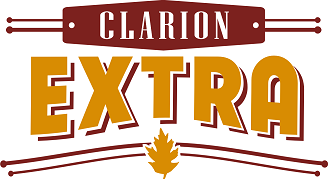CLARION – Clarion University and physics professor Chunfei Li have been awarded a $305,097 grant from the National Science Foundation.
With this grant, the university and Li have received $1,005,642 in NSF grants since 2011, according to a news release from the university.
The latest grant will support Li’s project, “RUI: Morphology and Crystalline Orientation of Particles in Al65Cu20Fe15 Alloy Prepared by Arc Melting.”
“Students will be given opportunity to take on part of the project, which will be conducted on a level similar to those conducted at research universities and national labs,” Li said. “Two undergraduate students will have opportunity to work as paid research assistants.”
Through prior work on the project, Li and his students have identified previously unreported details about the morphology and crystalline orientation of surface particles of a molten aluminum-copper-iron alloy.
“In a crystalline structure, atoms are arranged according to predefined rules, while in amorphous structures atoms are packed in random fashion. Quasicrystalline structure can be considered as a state between the two,” Li said.
“Materials of crystalline and amorphous structures, represented by gold and window glass, respectively, have been known to mankind for thousands of years. In contrast, materials of quasicrystalline structure were recently discovered in the 1980s, and many aspects remain to be studied.”
The majority of the project will be conducted at Clarion University based on the usage of the state-of-the-art scanning electron microscope, energy dispersive X-ray spectroscopy and electron backscattering diffraction, equipment purchased through prior NSF grants.
The studies will be supplemented by theoretical analysis, X-ray diffraction, focused ion beam and transmission electron microscope examinations in collaboration with the University of Maryland, SUNY University of Buffalo and Youngstown State University.
Students can participate as volunteers or to fulfill a course requirement. About 100 undergraduate students will be exposed to the project through introductory courses.
Two high school students will have the opportunity to work on the project for a week in summer as paid research assistants. Students from one neighboring high school will be invited to campus to learn about the project from a principal investigator and undergraduate students.
Students working on the present project will be required to learn about the research conducted around the world, make occasional trips to research universities to use instruments housed there and to attend national conferences.
$

